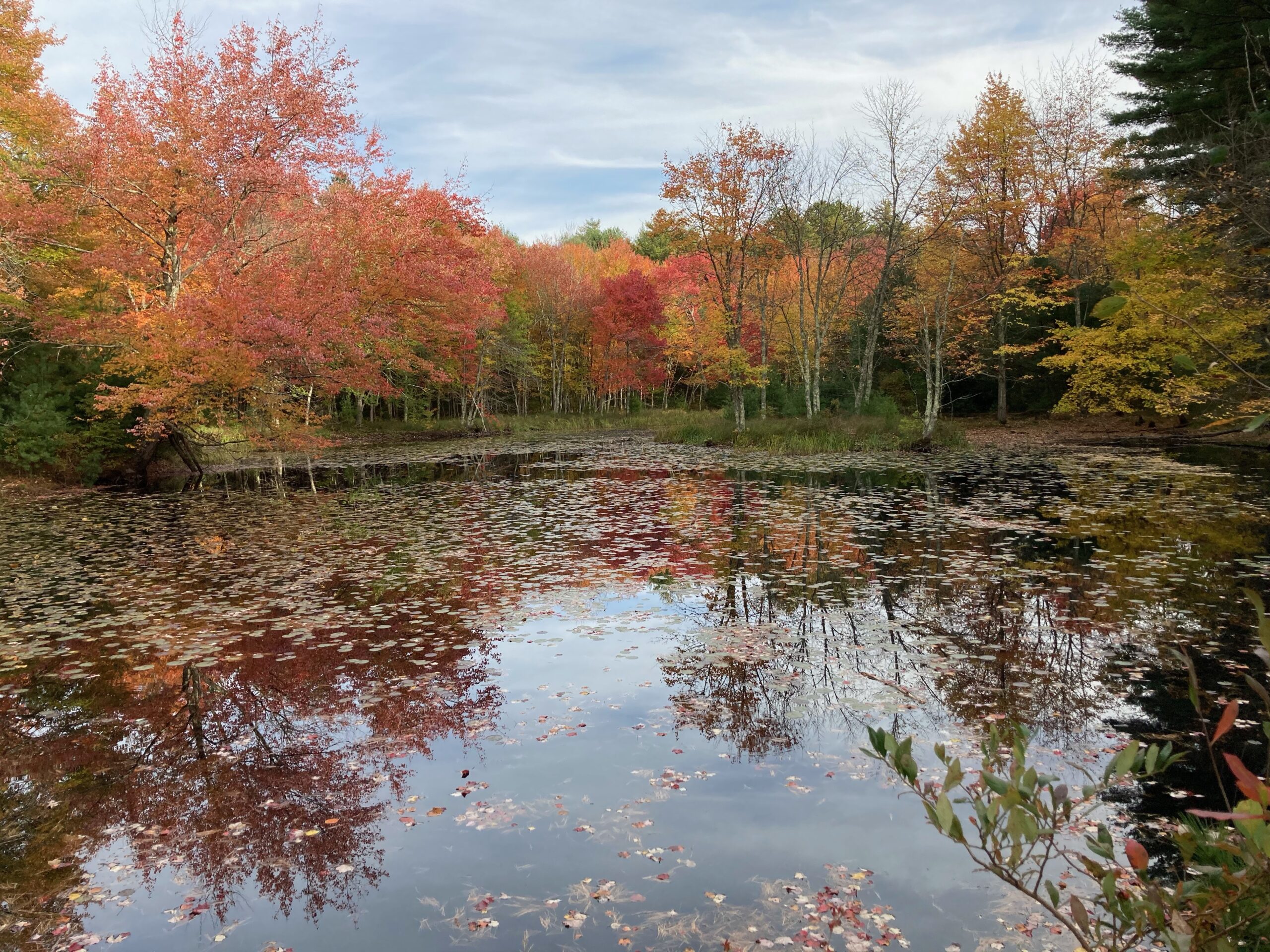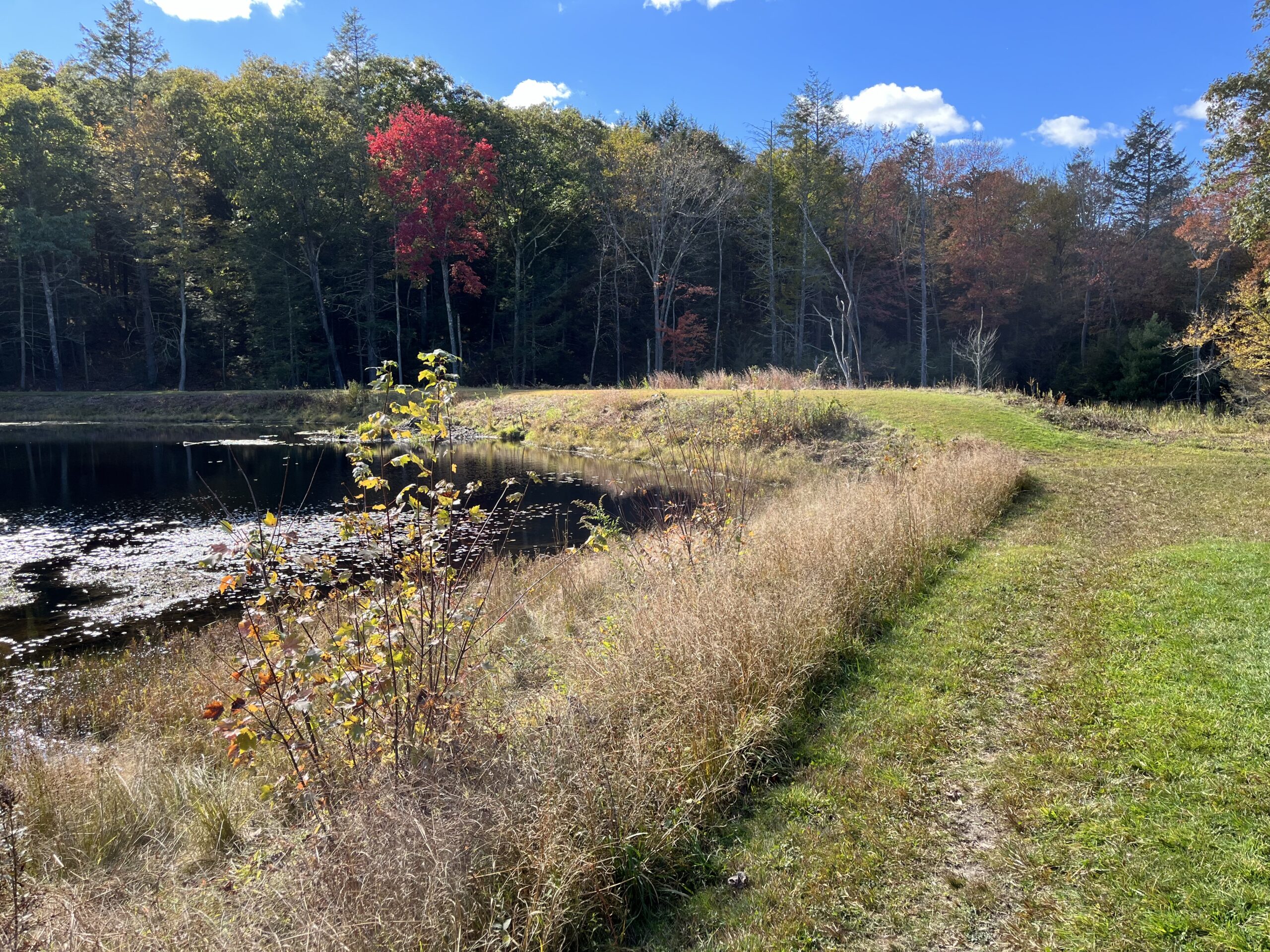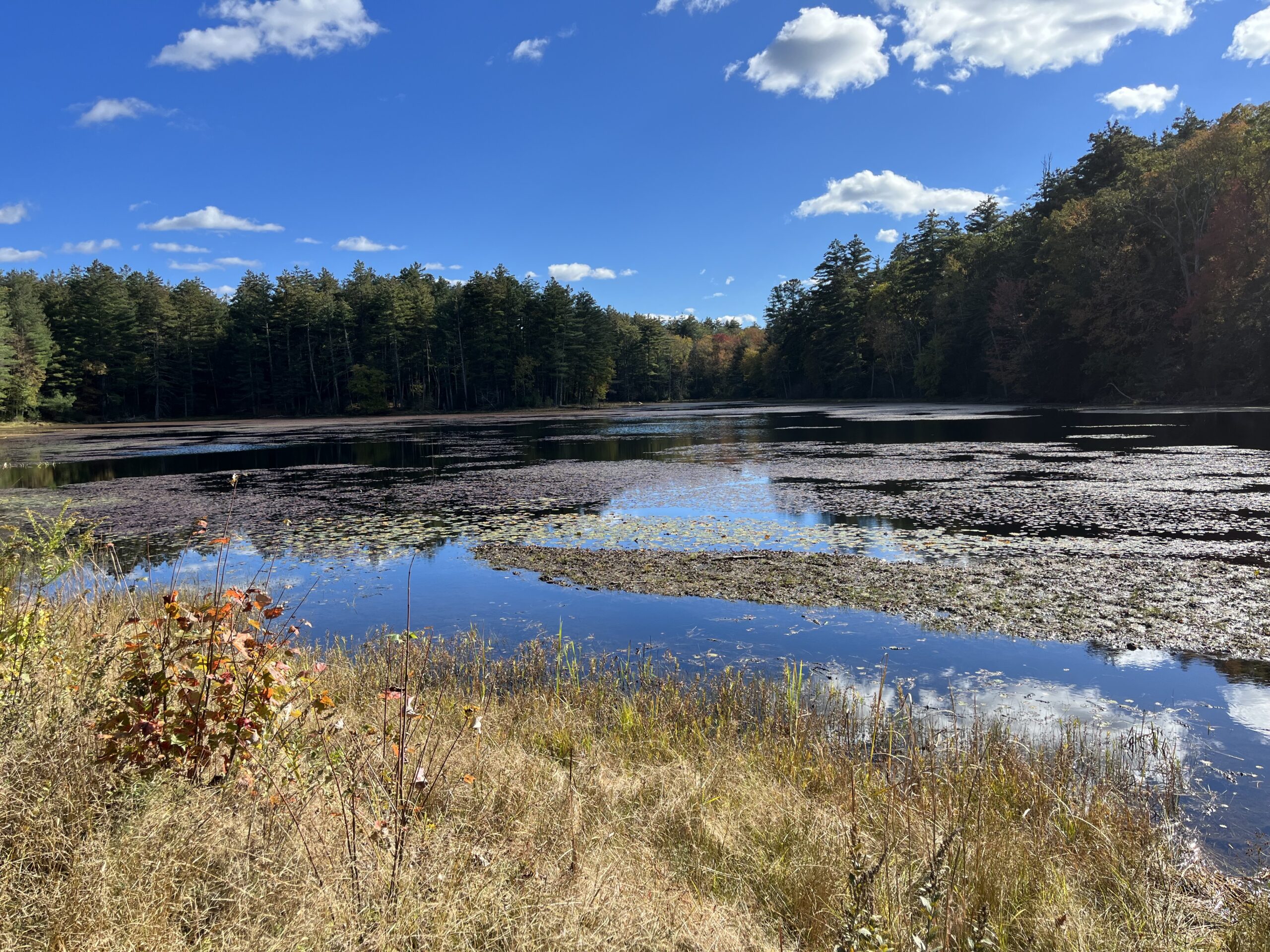Upcoming Events
Join us for upcoming events to learn more about where we are in this process.
Webinar
Webinar Tuesday, December 2nd from 6-7PM
Join us in person or on Zoom to learn more about an opportunity to restore the natural flow of the river at Peaked Mountain Reservation by removing Lunden Dam. We will discuss how removing the dam will restore a cold-water stream habitat for brook trout, reduce safety hazards, and how we plan to maintain an important recreational trail after the project is complete.
About
Over the next several years, The Trustees will work towards removal of the Lunden Pond Dam to address existing safety concerns and improve aquatic connectivity and resiliency at Peaked Mountain. Lunden Pond, located on the Millers Forest Tract of Peaked Mountain was created by damming an unnamed tributary of Temple Brook. The pond at the Lunden Dam is used for recreation as part of the trail network at Peaked Mountain.
Given downstream public and private infrastructure, the Lunden Pond dam is categorized as a significant hazard structure by the Massachusetts Office of Dam Safety. Over the last few years, the Trustees has made some improvements to the Lunden Dam to meet deficiencies found during routine inspections.
The Trustees conducted a statewide assessment of all of our dams to identify existing safety concerns and places where dam removal would improve aquatic connectivity and provide ecological benefits. Findings led us to consider dam removal at Lunden Pond to both address hazard mitigation and improved ecological conditions.
What will change?
Studies and surveys have shown that before the dam’s construction, the area now submerged was a large, vegetated wetland complex with areas of standing water. Dam removal will restore the natural river flows and connectivity of the stream ecosystem, including connections to habitat of rare species just downstream of the dam. While there will no longer be a large pond, the remaining wetland will provide a variety of habitat types and ample opportunities for wildlife viewing.
Why are The Trustees pursuing dam removal?
We are pursuing dam removal at Lunden Pond for several compelling reasons.
Hazard Mitigation – Lunden Pond is considered a Significant Hazard structure due to the downstream areas that would be greatly impacted by catastrophic failure of the dam, including private residences, town roadways, and a gas pipeline. Assessments of the dam have found significant structural issues that could lead to failure of the dam. From a structural sustainability and a climate resiliency perspective, dam removal will proactively eliminate the risk of dam failure during a large storm with powerful flood waters.
Ecological Restoration – Dam removal at Lunden Pond will reestablish historical connectivity of the stream ecosystem, allowing upstream passage of aquatic fauna, including organisms dependent on cold-water streams (ex. Eastern brook trout and Eastern pearlshell mussels). Downstream of the dam, Temple Brook is designated as a Coldwater Fish Resource by MA Division of Fisheries and Wildlife. Removal of the dam will restore the vegetated wetland habitat of the impoundment and improve water quality flowing from this high watershed area of Temple Brook.
What are the next steps in this process?
In 2024 The Trustees partnered with the town of Monson to complete a feasibility analysis funded by a Division of Ecological Restoration (DER) grant awarded to the town. We are also engaging in initial meetings with key stakeholders and partnering with state agencies including DER and the Division of Fisheries and Wildlife (DFW). We will host a series of community outreach meetings to update on our progress as dam removal design, permitting, and implementation is a lengthy process usually taking 3-5 years.
What will my experience be like after dam removal?
The loop trail around Lunden Pond is the main recreational corridor through the Miller Forest Tract of Peaked Mountain. The Trustees recognize the importance of maintaining a loop trail around the restored wetland complex following dam removal. We know many of our visitors enjoy the vista of the pond itself, but we hope that these visitors will appreciate the ecosystem benefits of removing the dam and restoring the stream and wetland habitats.
Some visitors to the property utilize Lunden Pond for fishing. We are committed to restoring natural fish habitat through this restoration project. While some fishing opportunities may decline, others we anticipate will rebound due to the restoration of natural streamflow.


